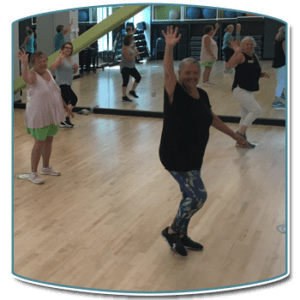The muscles at the base of the human pelvis are known as the pelvic floor and form the “sling” that supports internal organs such as the bladder and bowel.
These muscles assist with urinary control, continence, and sexual function. Maintaining a healthy pelvic floor can help reduce the risk of vaginal and rectal prolapse and support recovery after childbirth or prostate surgery.
Personal trainer Amy Biddle has worked with a client to address pelvic floor dysfunction, and through that experience has accumulated a body of knowledge that she has integrated into her client training and the yoga classes she teaches at PWC.
“Pelvic floor dysfunction can affect the bladder, rectum and vagina,” notes Amy. “If you are experiencing pain or incontinence, or something doesn’t feel quite right, your first step should be to visit your doctor to identify the source of your discomfort.”
Amy says that pelvic floor challenges fall into two categories: hypotonic, where weak pelvic floor muscles may respond to strengthening, and hypertonic, where tense pelvic floor muscles can benefit from relaxation and stretching. Breathwork using diaphragmatic breathing can assist with either diagnosis. Diagnosis will inform treatment, which may include different ways of doing exercises or activities you currently favor.
“Many people are familiar with Kegel exercises, but there are other exercises that can be employed after you’ve seen your doctor,” Amy points out. In the pelvic floor class she held at PWC in August, one practice for strengthening involved the visualization of picking up a jelly bean with the urethra, rectum or vagina. Sitting in a chair or on a stability ball while straddling a rolled up towel can help bring awareness to the pelvic floor area during targeted exercises.
It can be a new experience to practice engaging these muscles, one that requires mindfulness and attention. “Practice for strengthening can engage the core, hips and breath – really the entire abdominal compartment is involved,” Amy observes. “To connect with the muscles, it may help to capture the feeling you have when controlling your urination or defecation.” For a hypertonic or too strong pelvic floor, Amy tends to offer certain yoga poses and the 3-part “yoga breath” that engages the full core for relaxation.

“Pelvic floor health is not something that we talk about much, but challenges are common and can crop up after child birth, post trauma, and as we age. It’s a part of the body that can hold mental health and anxiety challenges. Sometimes people take the symptoms of pelvic floor dysfunction, like incontinence, as something to be shrugged off. As in ‘oh, it’s a common complaint’,” observes Amy. She advises, “Just because something’s common doesn’t mean it’s normal. You want to take action as early as possible to benefit yourself in the long run.”
Trainer tip: Don’t ignore your pelvic floor! Consult with your doctor to understand your current pelvic floor health so that you are informed and can pursue the course of action that’s right for you.
If you would like to set up a consultation with Amy Biddle or another PWC personal trainer, please contact training manager Whitney Propps at wpropps@culpeperwellness.org or 540-445-5388.

